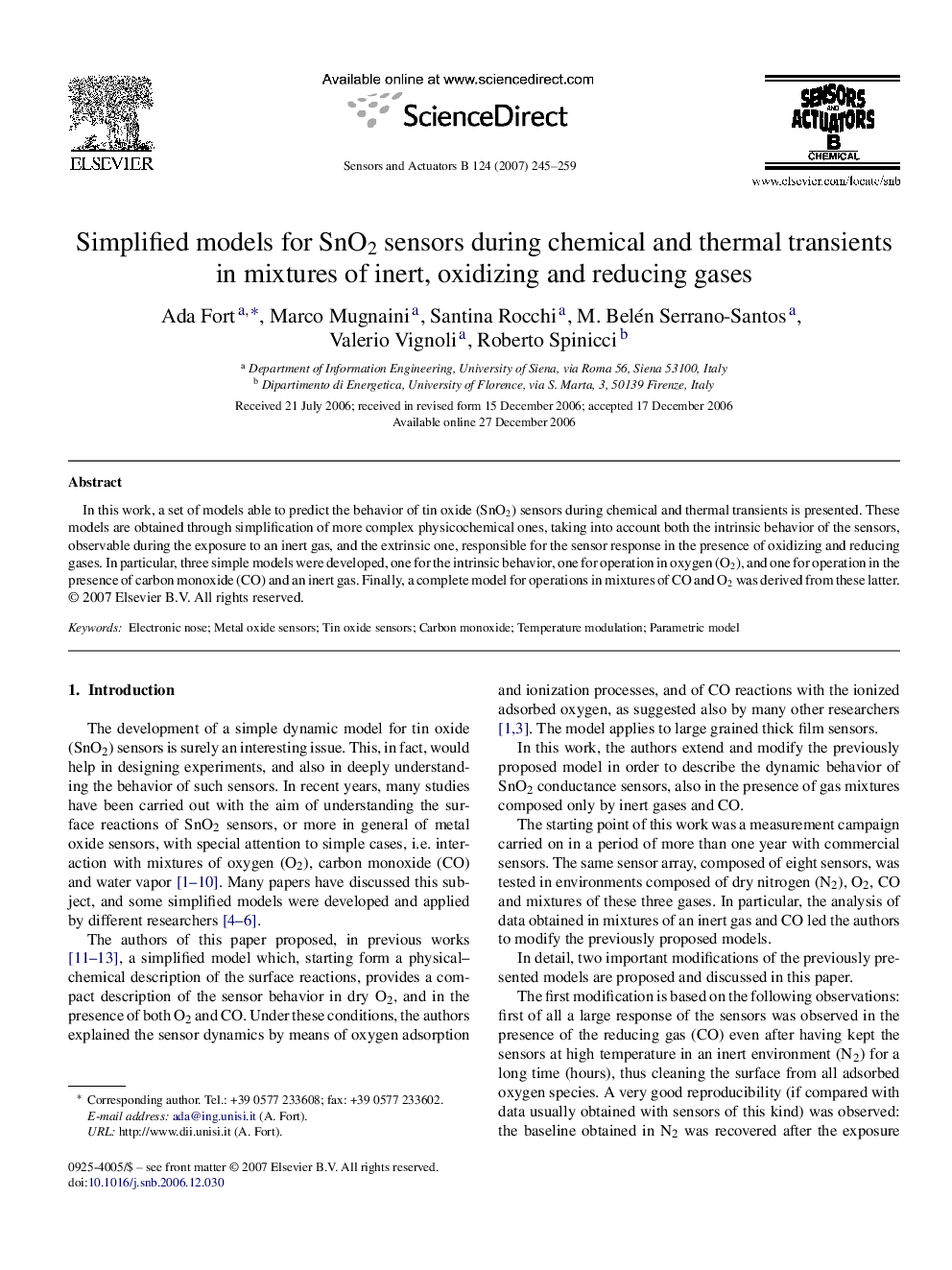| Article ID | Journal | Published Year | Pages | File Type |
|---|---|---|---|---|
| 751727 | Sensors and Actuators B: Chemical | 2007 | 15 Pages |
Abstract
In this work, a set of models able to predict the behavior of tin oxide (SnO2) sensors during chemical and thermal transients is presented. These models are obtained through simplification of more complex physicochemical ones, taking into account both the intrinsic behavior of the sensors, observable during the exposure to an inert gas, and the extrinsic one, responsible for the sensor response in the presence of oxidizing and reducing gases. In particular, three simple models were developed, one for the intrinsic behavior, one for operation in oxygen (O2), and one for operation in the presence of carbon monoxide (CO) and an inert gas. Finally, a complete model for operations in mixtures of CO and O2 was derived from these latter.
Keywords
Related Topics
Physical Sciences and Engineering
Chemistry
Analytical Chemistry
Authors
Ada Fort, Marco Mugnaini, Santina Rocchi, M. Belén Serrano-Santos, Valerio Vignoli, Roberto Spinicci,
